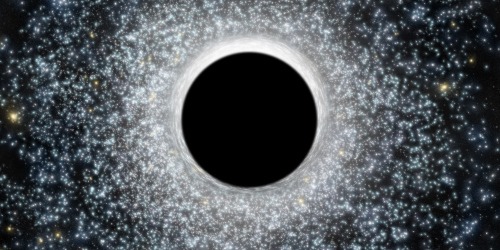Don’t Be Sold on Black Hole Imitators
Black holes have always been difficult to accept, which is why several studies over the years have proposed so-called exotic compact objects, or ECOs, in lieu of black holes. These hypothetical objects—which go by names like gravastars and fuzzballs—appear to explain all the black hole observational evidence without having any of the apparent black hole paradoxes. A new study of one class of ECO, the bosonic star, however, pokes holes in this argument [1].
In the past few years, researchers have observed several “smoking gun” signatures of black holes, such as gravitational-wave signals from mergers and images of light-encircled shadows. And yet, black hole doubters remain (see Synopsis: Did Black Hole “Mimickers” Produce LIGO Signal?). “There has been a lingering suggestion in the scientific literature that the astrophysical objects we regard as black holes may actually be something different, and potentially less dramatic,” says Carlos Herdeiro from the University of Aveiro in Portugal.
Herdeiro and his colleagues considered a currently popular ECO candidate, the bosonic star, which is made of dark matter (see Synopsis: Axion Miniclusters Might Be Microlenses). They imagined a bosonic star surrounded by a light-trapping region called a light ring, which can disguise the star as a black hole. The team performed numerical simulations tracking the star’s formation and evolution. In some cases, material was ejected outward, leading to the dissolution of the light ring. In other cases, material collapsed inward and created a veritable black hole. Both outcomes imply that a light-ringed bosonic star could only last a short time (at most a few years) before it would no longer be able to mimic a black hole.
–Michael Schirber
Michael Schirber is a Corresponding Editor for Physics Magazine based in Lyon, France.
References
- P. V. P. Cunha et al., “Exotic compact objects and the fate of the light-ring instability,” Phys. Rev. Lett. 130, 061401 (2023).




